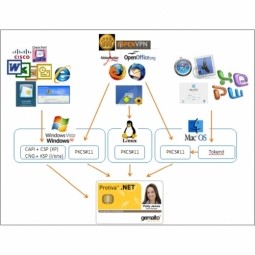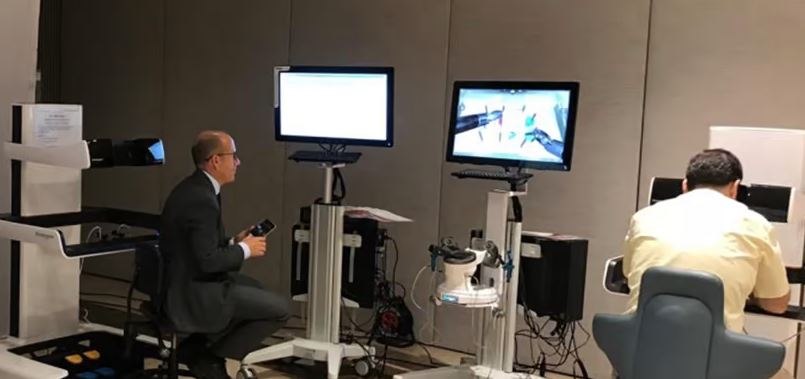Customer Company Size
Mid-size Company
Region
- Europe
Country
- Portugal
Product
- ICONICS GENESIS32™ HMI/SCADA software suite
- ICONICS WebHMI™
- AlarmWorX™32 Multimedia
Tech Stack
- B&R’s X20 series
- Beckhoff compact PLCs
- Modbus TCP OPC Server
- Kepware OPC Server
- SQL databases
Implementation Scale
- Enterprise-wide Deployment
Impact Metrics
- Productivity Improvements
- Cost Savings
Technology Category
- Application Infrastructure & Middleware - Data Exchange & Integration
Applicable Industries
- Education
- Life Sciences
Applicable Functions
- Discrete Manufacturing
- Facility Management
Use Cases
- Building Automation & Control
- Process Control & Optimization
- Condition Monitoring
Services
- System Integration
- Software Design & Engineering Services
About The Customer
The International Iberian Nanotechnology Laboratory (INL), located in Braga, Portugal, is an intergovernmental organization created to foster interdisciplinary research in nanotechnology and nanoscience. Aiming to become a vital part of Europe’s scientific area, INL provides a high-tech research environment addressing major challenges in nanomedicine, nanotechnology applied to environmental and food control nanoelectronics, as well as nanomachines and molecular manipulation at nanoscale. With a total area of 28,000 square meters, the INL will house more than 200 top level scientists and about 100 PhD students, besides the laboratory support and administrative personnel. Main outstanding spaces of the building included a clean room space with a total area of 1,050 sq. meters, 11 high accuracy rooms, 23 wet laboratories, 23 dry laboratories, and 6 biology laboratories.
The Challenge
The International Iberian Nanotechnology Laboratory (INL) in Braga, Portugal, required a comprehensive, state-of-the-art HMI/SCADA system to handle its building management. The complex is divided into a hotel for resident researchers and the main building, where clean rooms, laboratories, high accuracy areas and administrative offices are located. The application involved deploying an ICONICS integrated Building Management System, paying special attention to the clean room and high accuracy and laboratory areas, as well as to the critical process systems. Critical areas such as clean rooms and high accuracy labs don’t allow any downtime for the HVAC system, because most of the experiments carried out in these zones are expensive and take a long time. Should any failure occur while an experiment is being carried out, it would have to be started from the beginning, implying additional and unacceptable costs. On the other hand, the HVAC system for these areas was designed to work 24 hours a day and 365 days a year. In addition to the temperature, humidity and pressure data monitoring and collection for the certification of the clean rooms, it was an additional challenge to control the temperature in the high accuracy rooms with a required accuracy of ±0.1ºC.
The Solution
The INL, working with Cofely GDF Suez (España), selected the ICONICS GENESIS32™ HMI/SCADA software suite for their new Building Management System integration project. The Building Management System was designed to control and monitor the following systems: HVAC, Hot Water Production, Chilled Water Production, Low Temperature Chilled Water Production, Process Chilled Water, Ultrapure Water, Vacuum, Compressed Air, Acid Waste Neutralization, Flammable/Toxic Gas Detection, Fire Detection and Smoke Exhaust, Electrical Transformer Substations, Natural Gas Detection, and Liquid Leak Detection. There are over 14,000 total I/O points in the facility. The control system is based on B&R’s X20 series. The main control tasks are handled by over 100 control cabinets with their respective B&R controllers. Besides the main controllers, over 60 Beckhoff compact PLCs, acting as Modbus TCP slaves, are utilized to control the variable volume boxes located in the conventional areas. B&R (communicating via B&R OPC Server) and Siemens and Omron PLCs (communicating via Kepware OPC Server) were provided by third-party special equipment manufacturers together with their systems and communicate with each other and with the OPC Servers. These are hosted in the same server as the GENESIS32 server via a dedicated Ethernet LAN.
Operational Impact
Quantitative Benefit

Case Study missing?
Start adding your own!
Register with your work email and create a new case study profile for your business.
Related Case Studies.

Case Study
Corporate Identity Solution Adds Convenience to Beckman Coulter
Beckman Coulter wanted to implement a single factor solution for physical and remote logical access to corporate network. Bechman Coulter's users were carrying smart card badges for doors, but also needed a one-time password token to access to our corporate network when they were not in the office. They wanted to simplify the process.

Case Study
Revolutionizing Medical Training in India: GSL Smart Lab and the LAP Mentor
The GSL SMART Lab, a collective effort of the GSL College of Medicine and the GSL College of Nursing and Health Science, was facing a challenge in providing superior training to healthcare professionals. As clinical medicine was becoming more focused on patient safety and quality of care, the need for medical simulation to bridge the educational gap between the classroom and the clinical environment was becoming increasingly apparent. Dr. Sandeep Ganni, the director of the GSL SMART Lab, envisioned a world-class surgical and medical training center where physicians and healthcare professionals could learn skills through simulation training. He was looking for different simulators for different specialties to provide both basic and advanced simulation training. For laparoscopic surgery, he was interested in a high fidelity simulator that could provide basic surgical and suturing skills training for international accreditation as well as specific hands-on training in complex laparoscopic procedures for practicing physicians in India.

Case Study
IoT platform Enables Safety Solutions for U.S. School Districts
Designed to alert drivers when schoolchildren are present, especially in low-visibility conditions, school-zone flasher signals are typically updated manually at each school. The switching is based on the school calendar and manually changed when an unexpected early dismissal occurs, as in the case of a weather-event altering the normal schedule. The process to reprogram the flashers requires a significant effort by school district personnel to implement due to the large number of warning flashers installed across an entire school district.

Case Study
Embracing Business Success in Real Time
· Increase control over growing Big Data to improve business decisions · Manage data for 28,000 biotechnology stockkeeping units in the fields of microbiology, molecular biology, animal cell cultures, plant tissue cultures, and lab ware for laboratory chemicals · Accelerate report generation and analysis with real-time data

Case Study
Implementing Robotic Surgery Training Simulator for Enhanced Surgical Proficiency
Fundacio Puigvert, a leading European medical center specializing in Urology, Nephrology, and Andrology, faced a significant challenge in training its surgical residents. The institution recognized the need for a more standardized and comprehensive training curriculum, particularly in the area of robotic surgery. The challenge was underscored by two independent studies showing that less than 5% of residents in Italian and German residency programs could perform major or complex procedures by the end of their residency. The institution sought to establish a virtual reality simulation lab that would include endourological, laparoscopic, and robotic platforms. However, they needed a simulator that could replicate both the hardware and software of the robotic Da Vinci console used in the operating room, without being connected to the actual physical console. They also required a system that could provide both basic and advanced simulation training, and a metrics system to assess the proficiency of the trainees before they performed surgical procedures in the operating theater.

Case Study
Edinburgh Napier University streamlines long-distance learning with Cisco WebEX
• Geographically dispersed campus made in-person meetings costly and inconvenient.• Distance-learning programs in Malaysia, India, and China required dependable, user-friendly online tools to maximize interaction in collaborative workspaces.• Virtual learning environment required a separate sign-in process, resulting in a significant administrative burden for IT staff and limited adoption of collaboration technology.






